-
Posts
5,391 -
Joined
-
Last visited
-
Days Won
3
Content Type
Profiles
Forums
Blogs
Gallery
Events
Store
Posts posted by Gordon Williamson
-
-
The set also comes with his Afrika cuffband.
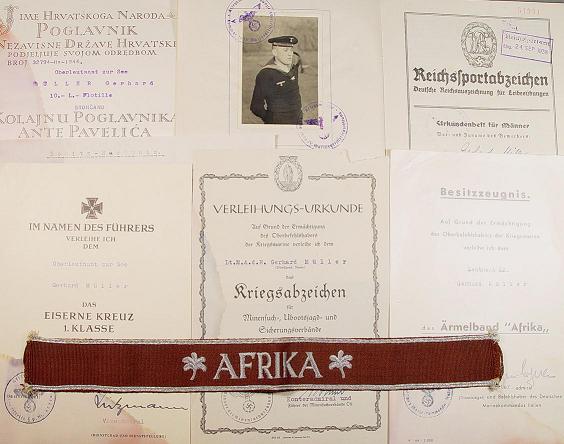 0
0 -
And qualified for the Minesweeper Badge.
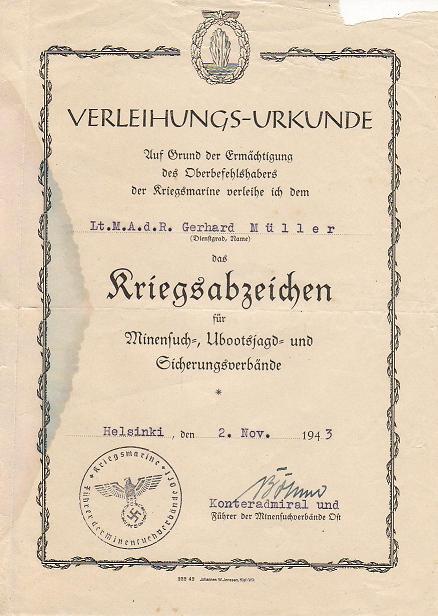 0
0 -
and the Croat Bravery Medal
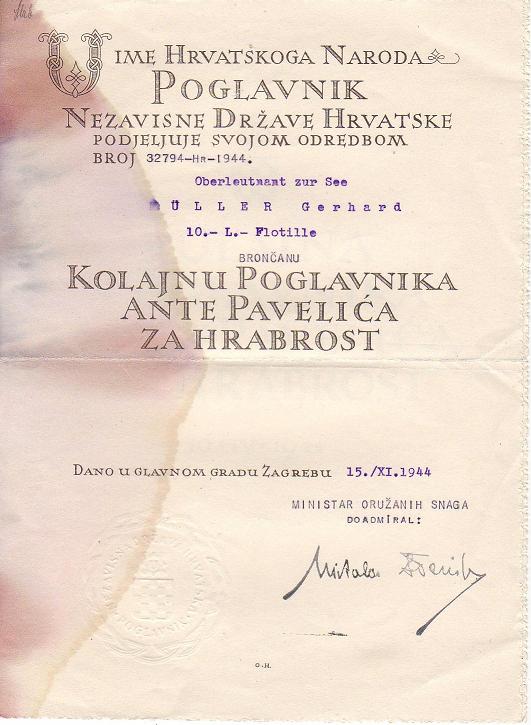 0
0 -
After North Africa he served in the Adriatic and also in the waters around Finland, where he won the EK1
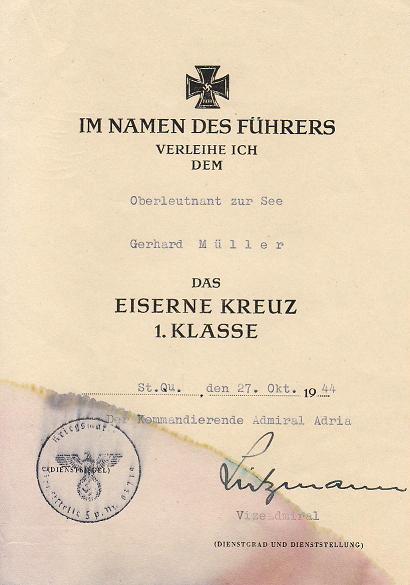 0
0 -
For me the best and most important doc in the set - the extremely rare naval version of the award document for the Afrika cuffband.
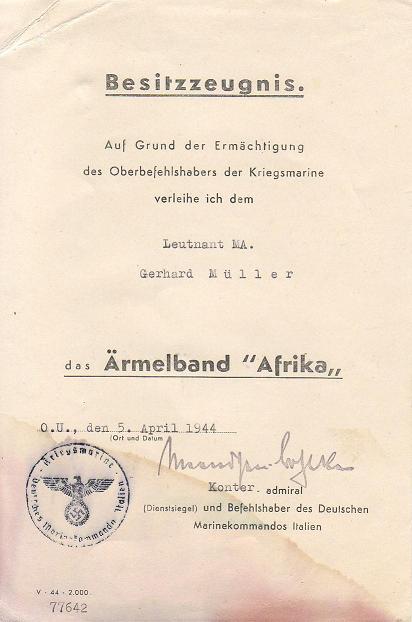 0
0 -
Authorisation to wear the Italo-German Medal
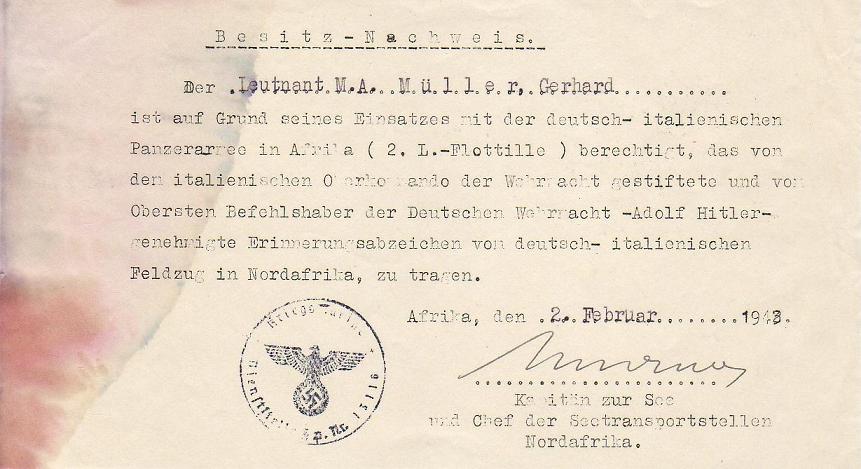 0
0 -
His DRL Sports Badge booklet.
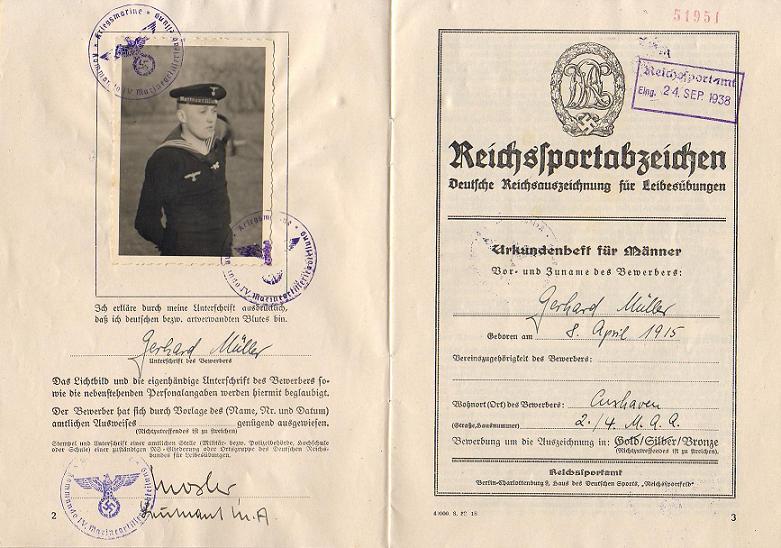 0
0 -
Jumping the gun a bit on this set I am buying as I won't have it in hand for a week or two yet so these are the sellers pics.
Leutnant M?ller served in North Africa with 10 L-Flotille (Landungsflotille). These are the guys that transported the esssential and desperately needed supplies over the Med to Rommel's forces and suffered serious losses in the process. Their vessels were the so-called Marinefahrpr?hme, shallow draft barge type vessels which must have been a real pig to sail on anything but totally calm seas, but reasonably heavily armed.
This is a section from one photo of one of M?ller's boats.
 0
0 -
Very, very nice indeed. Good to see a pair in such fine condition.
0 -
Interesting point Martin. The contrast certain looks deliberate and not just due to rubbing of the high points.
0 -
Very nice example Martin. Indeed not an easy maker to find. The overwhelming majority that turn up are Schwerin and most of the other makes are relatively scarce in comparison.
0 -
During the war, the Matrosenm?tze was rarely if ever worn at sea, but before the war, theses caps were actually worn on duty on submarines, not just on shore, so they sometimes would cut the long "tails" on the ribbons to stop them becoming tangled in any of the many pipes, valves etc inside the submarine, so a Matrosenm?tze like this with no "tails" on the ribbon can be quite accurate.
Very nice cap and ribbon anyway. !
0 -
There was only one numbered flotilla ribbon "1. Unterseebootsflotille 1.", plus the six named flotillas so only seven in all. In my experience Emsmann, Wegener and Lohs are the hardest to find/
None of the U-Boat ribbons is common, and Euro 151 is a very good price for the Salzwedel ribbon you got.
hi gordonabout the ubootflotille cap tallies,how many there was and in time what do you think is the more difficult and rare to find?i have won on ebay germany,for a nice price i think,151 euros included shipping,"untersebootflotille saltzweder",is it one of the most commom?many thanks
 0
0 -
But the identical characteristics are most noticeable in the features of the eagle.
 0
0 -
-
We know that the firms of Mayer, Zimmermann and Schickle were linked in some way as their U-Boat badges are near clones of each other as far as obverse die characteristics are concerned, only minor differences in finishing/ fittings differentiate them.
Well, the destroyers for these firms are absolutely identical too. Here's a comparison shot of Schickle, Zimmermann and Mayer.
Mayer badge from Skip Burtonshaw collection, Zimmermann from Jan Arne Straete
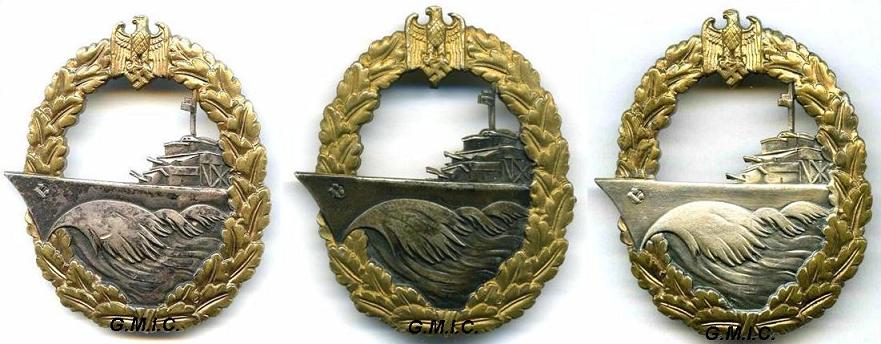 0
0 -
Pin is marked L/15
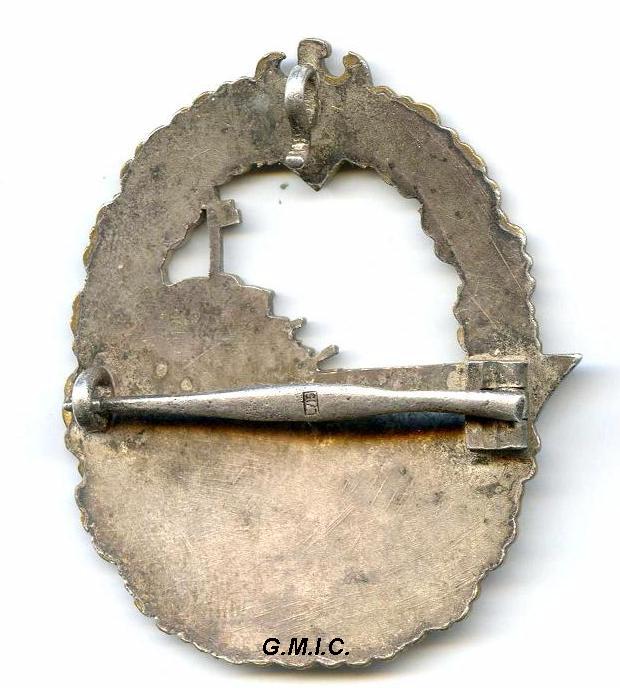 0
0 -
Latest addition to the fleet.
Delighted to get this one as Schickle is one of the rarest makers for this badge.
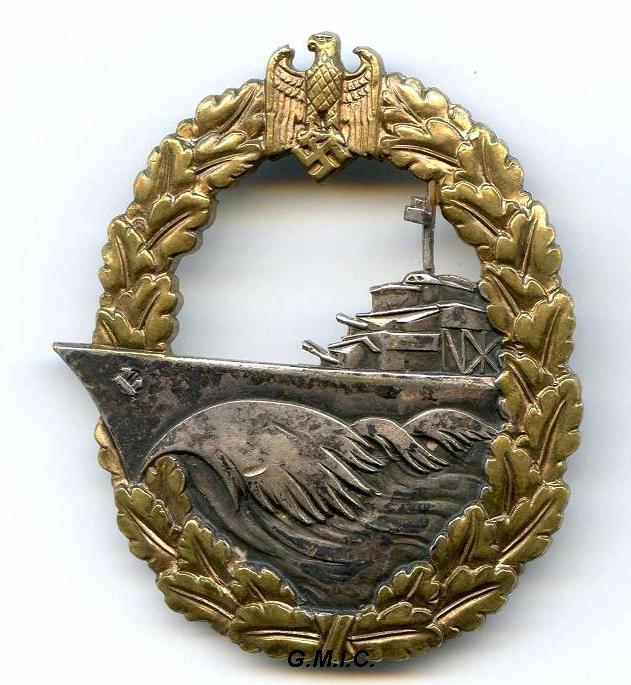 0
0 -
Hello Daniel,
The sweat diamond inside looks to be from stiff celluloid rather than soft plastic, which is a good sign.
However, the firm of Heinrich von der Aa in Bremen was still in business until recent times, still making naval caps so any caps with this makers details inside has to be treated with caution as the majority of them that turn up come from after World War 2.
The combination of insignia and style of cap doesn't look right to me. A cap in the exact style used by the Kriegsmarine (like your cap) was authorised in 1937 and it certainly used the type of cockade/oakleaves badge on the cap band that your cap has. However this cap was worn with the gold metal eagle/swastika with the iron cross on its breast. They should also have marked on the lining "Vorschriftsm?ssige M?tze des NSDMB"
Either way, the cap should have the black woven mohair band which is missing.
What material is the binding around the edge of the visor ? It does look excessively shiney which suggests it may be plastic and that would indicate postwar.
The bigest red flag for me is the stamp on the inside of the sweatband. This is just plain wrong and has been added to try and "enhance" the cap. The stamp is a document stamp from a Minesweeper Flotilla and should never be found inside a cap.
I strongly suspect that this is an early postwar Bundesmarine cap which has been messed around with.
0 -
They dont seem to fit anywhere...
They are not Flak,
No, No, No Noooooo. Completely wrong!
The official title "Kriegsabzeichen f?r die Marineartillerie" is a misnomer. The original foundation document from Grossadmiral Raeder makes it clear that this badge was instituted to reward those engaged in air defence and thus is directly analogous to the Flak badges of the Army and Luftwaffe
Just look at the points system for award of the badge - all to do with shooting down aircraft.
a) Shooting down an enemy airplane by heavy, medium or light Flak battery ? 2 points
b) Participation in shooting down an enemy aircraft in co-operation with several other batteries ? 1 point.
c) Crews of medium and heavy coastal batteries or other defence systems are considered on an equal basis to crews of light anti-aircraft batteries.
d) Successful operation of an 150cm anti-aircraft searchlight battery or a 60cm anti-aircraft searchlight, which created the conditions for a successful interception by anti-aircraft batteries or night fighters ? ? point.
e) Successful operation of radar equipment which enabled the shooting down of an enemy aircraft by anti-aircraft guns or by fighters, by supplying target location data, if the equipment is not specifically assigned to a heavy anti-aircraft battery (In such cases, section a) applies) ? 2 points
Given that after the fall of France the first obstacle enemy aircraft had to get past was the coastal batteries, not only were these guys Flak troops, they were virtually the first line of Flak defences.
Only with subsequent revisions of the criteria was the badge awarded for achievements other than shooting down aircraft.
So, yes , I will be covering them. I think so far we have around 15 different makers with muktiple views of each, some great wartime photos of them in wear and quite a few different variations of the award documents.
The book is now complete by the way just last minute checks on the text and the captioning of the photos to be done.
0 -
Hi Ben,
Looks good to me
0 -
And Scharnhorst - note the position of the mainmast.
 0
0 -
Hi Colin,
Its the Gneisenau.
On first glance Scharmhorst and Gneisenau were near identical twins. Indeed when first built the spec of each ship was just about identical. However when they were rebuilt and got thier rakish "clipper" bows instead of the straight stem various changes were made.
The most obvious tell-tale on photos is the position of the mainmast. On Gneisenau it remained attached to the rear of the funnel. On Scharnhorst it was moved further aft.
Here is a snap of Gneisenau from a similar view to yours
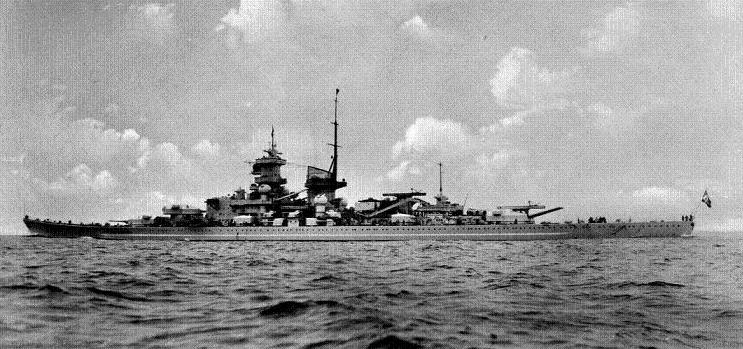 0
0 -
Another new arrival and one that is quite hard to find. Early Tombak Minesweeper by Steinhauer & L?ck.
The style of pin and the outline profile of the waterspout are what identifies it.
This one has a round wire hook, but flat wire hooks are also known.
 0
0





Kriegsmarine Afrika Document set.
in Germany: Third Reich: Research, Documentation & Photographs
Posted
And a very nice photo album with several shots of him wearing the Afrika band on tropical and ( as here) dark blue uniform.